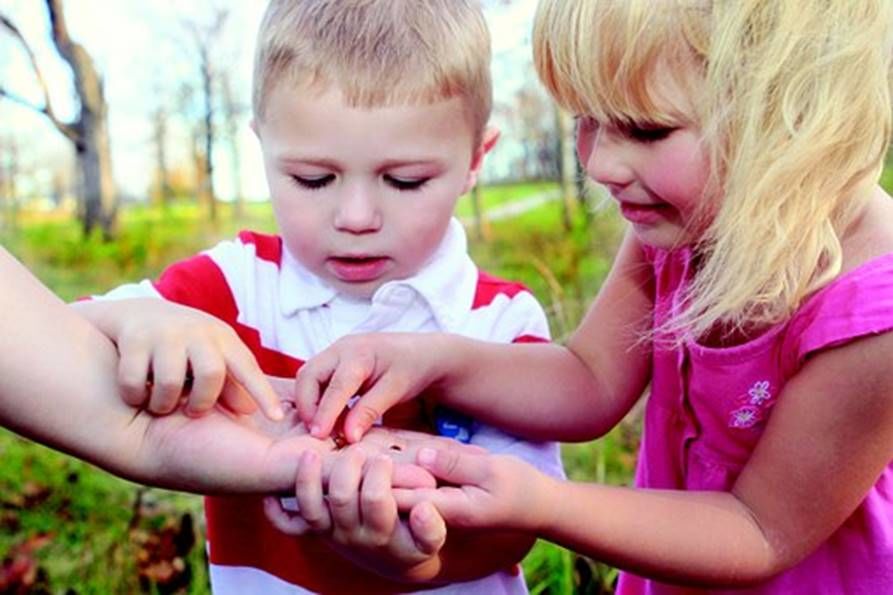Sensory integration activities are fun and creative, and are an important part of a child’s intellectual, social, and emotional development; the development of a positive self-esteem; positive interactions in the world; and the achievement of normal developmental milestones.
Sensory integration activities should be used with all children to enhance their development.
From the womb into adulthood, our neurological systems process an extraordinary amount of sensory information everyday from all our senses. Our brain must then interpret this information and make sense of it, thus allowing us to make use of this information for learning, survival and protection.
In this blog, we will focus on the tactile system. The tactile system develops in utero. A baby’s first experience to their surrounding environment occurs through touch. Touch is the central interface between our bodies and the outside world.
Tactile learning is essential for a child’s growth in their physical abilities, cognitive and language skills, and social and emotional development.
Our touch system, comprising our skin, is sensitive and thus reactive to changes in our environment, such as detecting changes in pressure, temperature, pain, and different types of touch sensations. The receptors in our skin carry this information to the brain where the brain interprets this information and decides how to respond.
A child who uses their tactile system as a style of learning (other styles include visual, auditory and movement) may display the following behaviour while learning or focusing:
- Hands-on activities that involve art projects, nature, acting
- Often taps their pencil, moves their feet, holds an object while studying
- Uses fingers to trace letters, numbers and shapes for spelling and reading
- Needs movement and constant breaks from their desk
Sensory Tactile Activities
Tactile activities can be an important part of a sensory diet or fine motor skills program. Tactile activities are helpful with hand and finger awareness, attention, and fine motor planning.
Here are some ideas that provide opportunities for play and exploration using the tactile sense.
- Sensory trays/box: Fill up a large container with sand or rice. Allow your child to explore this sensation. Try hiding small objects in the rice / sand for your child to find. Have your child describe how the texture feels to them.
- Swimming and bath time! It’s the perfect activity for whole body tactile input! Add sponges, cups, a watering can and eye droppers, for more fun and exploration!
- Play with sensory rich materials such as play dough, slime, goop, clay, and finger paint. Play with your hands and feet!
- Introduce toys with vibration such as a Wiggle Pen, a vibrating pillow, or a vibrating plush toy.
- Massage is one of the best ways to stimulate the tactile system. Try incorporating this into your daily routine. Massage hands, feet, scalp, back.
- Mud play can help develop a strong and healthy tactile system!
- Hide and seek: hide small objects in play dough, slime or theraputty and ask your child to use their fingers only (vision occluded) to find the objects.
- Shaving cream activites such as drawing on a window or mirror.
- Drawing in salt and sand.
- Fill balloons or rubber gloves with corn / flour / rice etc to use as a stress ball.
Below are 2 recipes for very different home-made cloud dough
1. Fluffy Cloud Dough
Ingredients
2 Heaping cups cornstarch
1 Cup Scented Conditioner
Instructions
- Place cornstarch into a large mixing bowl.
- Pour conditioner into bowl of cornstarch.
- Mix with a spatula until too hard to mix.
- Use your hands to finish kneading the dough together.
- Now it's ready for play!
2. Dry Cloud Dough
To make cloud dough mix in the 1:8 ratio. That is 1 cup of oil to 8 cups of flour.
Ingredients
- 2 cups All-purpose flour
- 1/4 cup coconut oil / olive oil
- 5-10 drops Oil based food colouring
Instructions
- Use your kitchen measuring cups to avoid your cloud dough recipe from being too wet.
- Premix colouring in the oil before adding it to the flour or if using powdered colouring, mix this into the flour before adding the oil.
- Mix your ingredients in a Ziplock bag. Knead and shake around until mixed as much as possible.
- Before you play you will have to get your hands into the mix to pinch the flour to distribute the remaining oils and colouring. At this point, it should be mixed well enough that your hands will not stain.
- Empty out into a sensory tub for playing.
